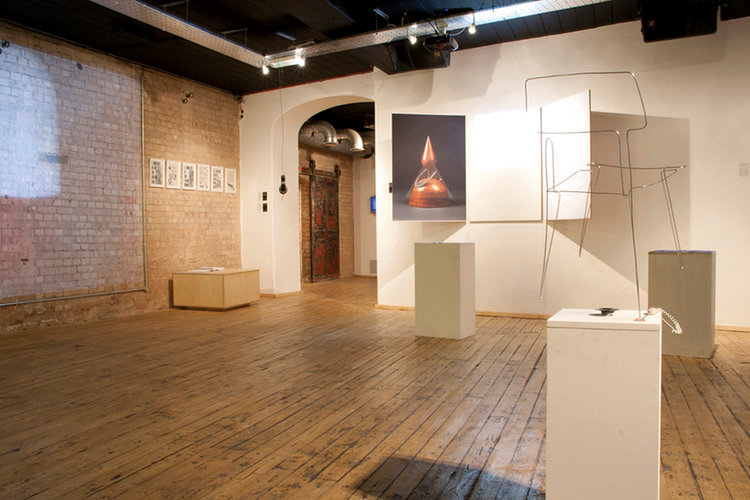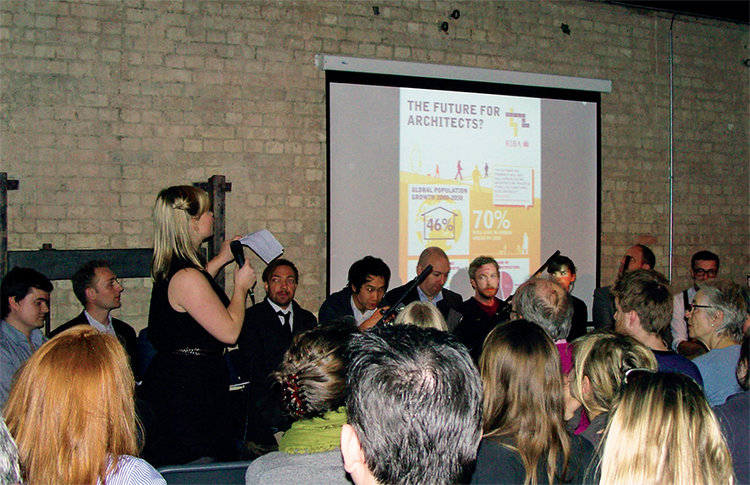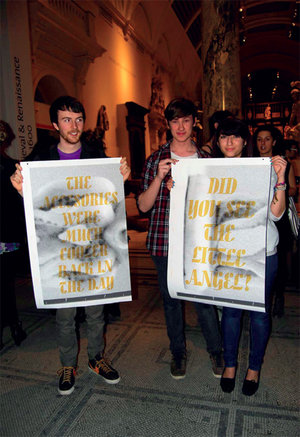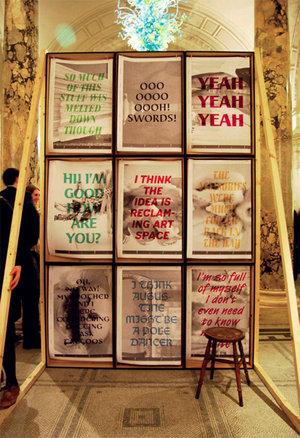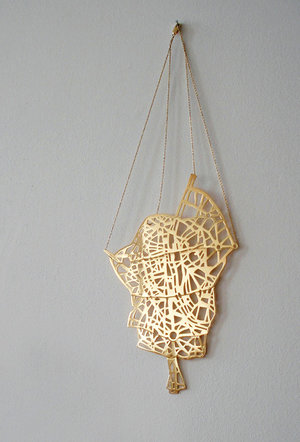WITH BEATRICE GALILEE: UNFRAMING #2_CITY
BY MARIANA PESTANA
MARIANA PESTANA: Our last conversation was built around architectural criticism and its expressions in the form of writing and curating. We talked about behavioural codes and informality and how that influences the way people relate to spaces and their programme. We shared experiences in architecture and our common belief in interdisciplinary practice. Lastly, we spoke about objects and their ability to convey messages and exert criticism.
As you know, I am interested in architecture’s potential of using its very language to communicate. I have been conducting experiences accordingly, combining architecture curation with a careful choice and manipulation of the space where it happens. An example of this is ‘Pub Talk: spatial settings to eat and drink’, a conference we (DE Magazine) organised with MA&DE (with Paulo Moreira) at London Met last month. There, a group of young practitioners from different disciplines presented projects on eating and drinking, themes that I have identified as the key ingredients to start a good conversation. The fact that this talk happened in a pub (The Bailey) intended not only to test the influence of spatial background in the development of the conversations but also to grant informality to them. The pub is historically a place of encounters and exchange of ideas, thus we aimed to situate the talk between an organised event and a spontaneous evening at the pub where people came but not necessarily because there was a talk happening.
BEATRICE GALILEE: I love the idea behind Pub Talks.
When I consider the best conversations I’ve had about architecture, they have been on long tube journeys across London or over the eat on a late-night easyJet flights. It’s when I’m stuck in queues, traffic jams, stranded by weather or ending up on the wrong vaporetto that ideas and connections happen. The Venice Biennale is a fantastic thing but only rarely do I return to London inspired by what I’ve seen. For me, the loosening of the mind and flashes of inspiration rarely happen when the dictaphone is running.
I’m interested in how the conversations in The Bailey went. Did highlighting the spontaneity of the space put it under too much scrutiny? Did it perform? By promoting the conversations on a poster and organizing a time and providing an expecting audience affect the flow of a pub conversation you were aspiring to? Did the discussion take on a different tone and nature? Or did the space maintain its informality?
MP: Well, during the presentations I wouldn’t say that being at the pub was any different than at a conference room, except for the moment where James Gilpin offered a sip of his Export Whisky… this wouldn’t happen so naturally in a conference room. Thus, the most interesting moment was the conversation after the presentations, moderated by David Khon. There, everyone was sitting on the sofas and all over the floor. The conversation was very long and vivacious, to the point that people were fighting over the microphone as everyone wanted to talk at the same time…so, it was quite informal. Then the conversation continued outside as the pub had closed. I would argue that there was an informality that is not common to this sort of events! During the conversation, the dominant theme was speculation, the building of fictional scenarios and the narratives conveyed through architecture. Then it inevitably fell into a self-reflection around the fact that we were in a pub, talking about pubs, drinks and food. David Knight mentioned that the most interesting conversation about architecture he had ever had was at a pub and that epic conversations are often triggered by the consumption of alcohol.
Hans Ulrich Obrist once said that the more intersting moments of a conference are those immediately before and after it happens, where people meet and share ideas.
Could you tell me about your project space ‘The Gopher Hole’, which is in itself a place between a bar and an architecture gallery, and how the fact that you now operate within a specific place is generating a community around it?
BG: We’ve had a few debates at "e Gopher Hole and I’ve always felt that the conversations before and afterwards are what make the event worthwhile. We had a talk on critical futures in architecture and nearly every professional architecture writer in London was in the room. "at kind of cross-fertilsation is what makes our space valuable. We hope it’s going to be the kind of place where interesting people meet and plans are hatched. In the weeks before we opened I met Kyong Park, the founder of Storefront for Art and Architecture, in Seoul. He told me that the social aspect of Storefront always trumped its exhibitions and events. It was primarily a social club, a convergence of people and ideas, and that’s why it still maintains itself as such a huge presence, despite being pretty puny in size.
The Gopher Hole is a project I am running with aberrant archite!ure. As a group we want to explore ideas in contemporary culture and to provide a platform for others to do that too. It’s not an architecture gallery – I find that idea a bit perverse. The two words don’t belong together at all. But, like you, we do have an intrinsic interest in architecture as a medium. There is a lot of discussion and debate about curating architecture at the moment but essentially our space is circumnavigating it by being as open as possible to ideas. We had a TEDx conference streaming content directly from Ramallah at the weekend and we had speakers from the Russell Tribunal as well as some incredibly moving speeches about the situation in Palestine. What’s more, we can host a Pecha Kucha on young archite!s; we are having band nights and hosting dinner parties. By removing ourselves from ideology and not associating with one dogma or another, we are free to be a platform for other people’s ideas.The Gopher Hole is essentially a political idea – it is a nickname given to the informal tunnels that are dug beneath the Mexican/US border and used to smuggle people and goods. While there are other more playful connotations (we are in the basement of a Mexican restaurant; we are spontaneous and informal; we are totally independent) we do take that notion of interstitial spaces of under-the-radar and not officially sanctioned quite healthily. We definitely share an enthusiasm for this kind of interdisciplinary collaborations – who do you work with and why?
MP: It is true that there is a certain amnesia threat to exhibitions. Unlike texts, to which one can always return to, exhibitions live only in a very particular time and spatial frame. However, I strongly believe in the power of intuitive, nonverbal communication, and despite working as a writer as well, I feel more inclined towards a form of criticism that operates beyond the textual, verbal outline. Exhibitions are spatial for a finite period in time but the physical objects displayed – pieces – have the potential to evoke experiences from the past or to suggest ideas for the future. In that sense, they transcend the time and space of the exhibition in itself. Furthermore, the use of analogies, metaphors and allegory are processes of highlighting dimensions that usually remain under the shadow of slightly more linear or limited approaches. Therefore, I’ve been working with different mediums, from photography to jewellery design, allowing the audience to interpret, question and take a position, exploring the potential of the exhibited material to evoke ideas beyond the very object on display. Different people look at different aspects and qualities of the objects. This is very valuable for me and less likely to happen with a written piece, where it seems to be easier to persuade the audience to agree with your opinion. Perhaps more than text pieces, are objects open to interpretation?

